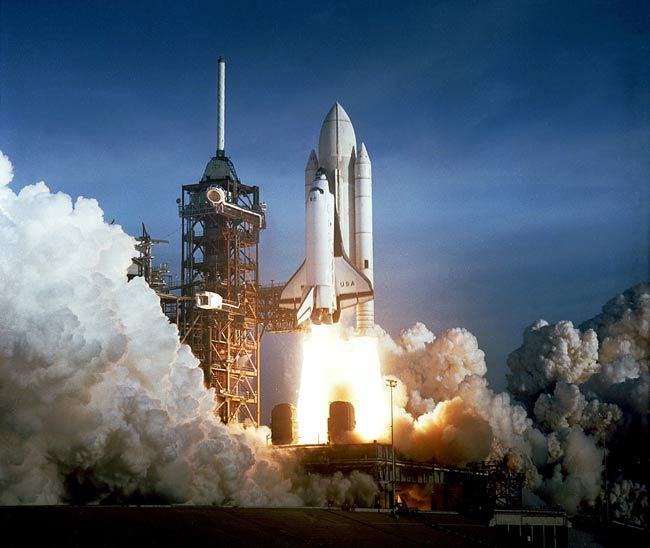Space X Starship is a new and powerful shuttle type. It's more powerful than NASA's rockets. And that large-scale reusable shuttle will be the model of the next-generation large-scale VTOL shuttles. Those shuttles will launch from the regular airfields. The regular shuttle can rise to a high atmosphere by using turbojets. And there the rocket boosters will launch.
The shuttle can use vertically aimed jet engines for rising it airborne, and then it can fly like regular aircraft until it reaches the very thin air layers. The system can use air-breathing rockets or flap scramjets. The system closes the air inlet of the scramjet by using a flap.
Then it uses that engine as a rocket. When the speed rises high enough, that system can start breathing air. And then, it rises out from the atmosphere and closes the flap again. In rocket mode, the rocket scramjet uses an oxygen and fuel mixture. When the flap is open the system breathes the air into the scramjet engine.
Images from the Top
 |
| (1) |
 |
| (2) |
 |
| (3) |
 |
| (6) |
 |
| (7) |
1)The SpaceX's Starship
2)Starship on rocket's nose
3) X-15 rocket plane
4) Space shuttle
5) Skylon-shuttle-concept.
6) Imaginational, multi-use spacecraft introduced in Tintin comics
7) NASA's 1970s plan for a multi-use space shuttle. The first aircraft rises the second one to the edge of the atmosphere. And then the second shuttle will rise to an orbital trajectory. (NAR A)
Those shuttles will not need special bases. The thing is that those next-generation shuttles don't need special runways either. They can launch from any launchpad like a parking lot if there is a portable fuel supply unit. That separates oxygen from the air. And those shuttles can use ethanol or hydrogen along with chlorine as fuel.
If those shuttles use oxygen and hydrogen as fuel, those rockets will not pollute at all. Electrolytic systems can make hose hydrogen and chorine along with oxygen from seawater. So one version of the launch site for those very powerful rockets from the sea areas. That thing solves the noise problems.
There is a possibility to use counter-noise to keep sound waves in the launching areas. And that decreases the noise problem near launching sites. But the systems can also use things like sonic tornadoes or LRAD systems that close the soundwaves behind the noise wall.
Electrolytic systems can use electricity that is from the ships. Or the system can use green electricity like floating solar cells. There is also a possibility that the shell of those rockets will put the tube, where water flows through the turbogenerator. That system can deliver electricity for the electrolysis system. The large-size multi-use space systems are the next-generation tools for civil and military applications.
http://www.astronautix.com/s/shuttlenara.html
https://interestingengineering.com/innovation/spacexs-starship-mega-rocket
https://www.spacex.com/
https://en.wikipedia.org/wiki/British_Aerospace_HOTOL
https://en.wikipedia.org/wiki/Skylon_(spacecraft)





No comments:
Post a Comment
Note: Only a member of this blog may post a comment.